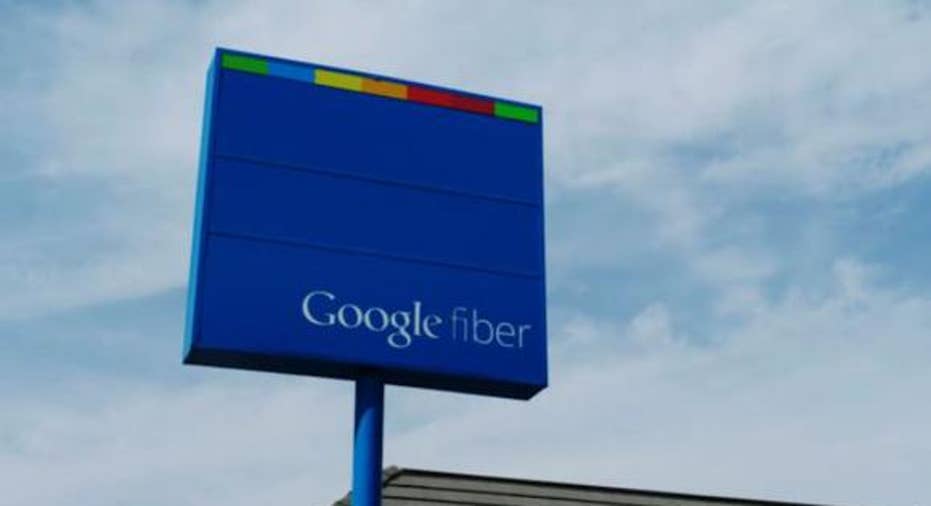Comcast's New Modem Could Crush Google Fiber

Source: Alphabet
Comcast subscribers could soon enjoy dramatically faster downloads.
In December, Comcast installed the world's first consumer-grade DOCIS 3.1 cable modem. Capable of handling download speeds on par with Google Fiber, DOCIS 3.1 represents a dramatic step forward for Comcast's Internet offerings, and the cable giant plans to roll the technology out to several key territories later this year, including Chicago, Detroit, and Miami. Alphabet's fledglingfiber service, which is nowseparatefromitscore search business, could be rendered superfluous.
A huge step forward for existing cable wiresThe average U.S. internet connection was about 12Mbps per second last year, according to Akamai. That's more than fast enough to stream high-definition video, download entire albums in mere minutes, and play video games online. But next-generation technologies, such as 4K video, virtual reality, and increasingly complex cloud computing applications demand more. The growing Internet-of-Things, with its emphasis on connected appliances, sensors, and wearables, will also strain existing connections.
Google Fiber currently offers its customers 1Gbps connections, which is around 80-times faster than the U.S. average, and considerably faster than what most Comcast subscribers are getting. This has led to widespread support for the service, and pleas and petitions from desperate consumers eager to take advantage of the speed Google is offering.
Last year, Comcast launched a fiber service of its own: Gigabit Pro. With download speeds of up to 2 Gbps, Comcast's fiber offering is actually better than Alphabet's, running twice as fast. But it's expensive -- around $300 per month plus installation costs -- and limited to select markets. Like Google Fiber, Gigabit Pro relies on fiber connections. That often means installing entirely newinfrastructure, a costly and sluggish process.
It varies regionally, but existing Comcast subscribers can often get connections of up to 100 Mbps using Comcast's DOCIS 3.0 modems over existing cable lines. The DOCIS 3.0 standard is theoretically capable of supporting 1Gbps connections, but most DOCIS 3.0 modems top out at around 300 Mbps.Comcast's new DOCIS 3.1 modems, however, can easily handle 1Gbps download speeds, and max out at a blazing fast 10 Gbps.
That means that Comcast will soon be able to provide its customers fiber-like speeds without having to go through the trouble of laying new wires. Comcast hasn't announced pricing for the service just yet, but it should be cheaper than Gigabit Pro, and available to virtually every Comcast subscriber -- not just the select few who live within its fiber footprint.
Comcast had more than 23 million broadband subscribers at the end of last quarter. In markets where it faces competition, DOCIS 3.1 should help it take share from rivals. It could also help generate additional revenue as existing customers upgrade to faster connections.
A benefit to Alphabet shareholdersEven if Comcast were to take customers directly from Google Fiber, this development should be applauded by Alphabet shareholders. Last quarter, for the first time, Alphabet broke out the results of its ventures unrelated to its core Internet services. Alphabet's Other Bets category -- which includes Google Fiber -- generated less than 1% of the company's revenue.
Nearly all of Google's products, including search, gmail, Google Maps, YouTube, and Google Play, depend on ubiquitous broadband connections to function. Alphabet consistently cites broadband connection quality as a major risk factor for its business in its annual report, as malfunctioning or sluggish connections could limit its customers' ability to use its products.
But the opposite is also true. Given that Google owns many of the web's most popular properties, Comcast customers with 1 Gbps connections are more likely to spend time with Google's products -- generating more advertising revenue for the company in the process. The widespread adoption of these superfast connections should also make it possible for Google to introduce entirely new products, ones currently unfeasible given the relative state of the Internet.
Of course, this was likely Google's plan all along. Google Fiber has made its way to a handful of cities, and plans to expand to several more, but it's unlikely Google would ever have become a major Internet provider. Simply by threatening competition, Google was able to successfully coax Internet service providers in the U.S. to dramatically improve their products.
The article Comcast's New Modem Could Crush Google Fiber originally appeared on Fool.com.
Suzanne Frey, an executive at Alphabet, is a member of The Motley Fool's board of directors. Sam Mattera has no position in any stocks mentioned. The Motley Fool owns shares of and recommends Alphabet (A shares) and Alphabet (C shares). Try any of our Foolish newsletter services free for 30 days. We Fools may not all hold the same opinions, but we all believe that considering a diverse range of insights makes us better investors. The Motley Fool has a disclosure policy.
Copyright 1995 - 2016 The Motley Fool, LLC. All rights reserved. The Motley Fool has a disclosure policy.



















